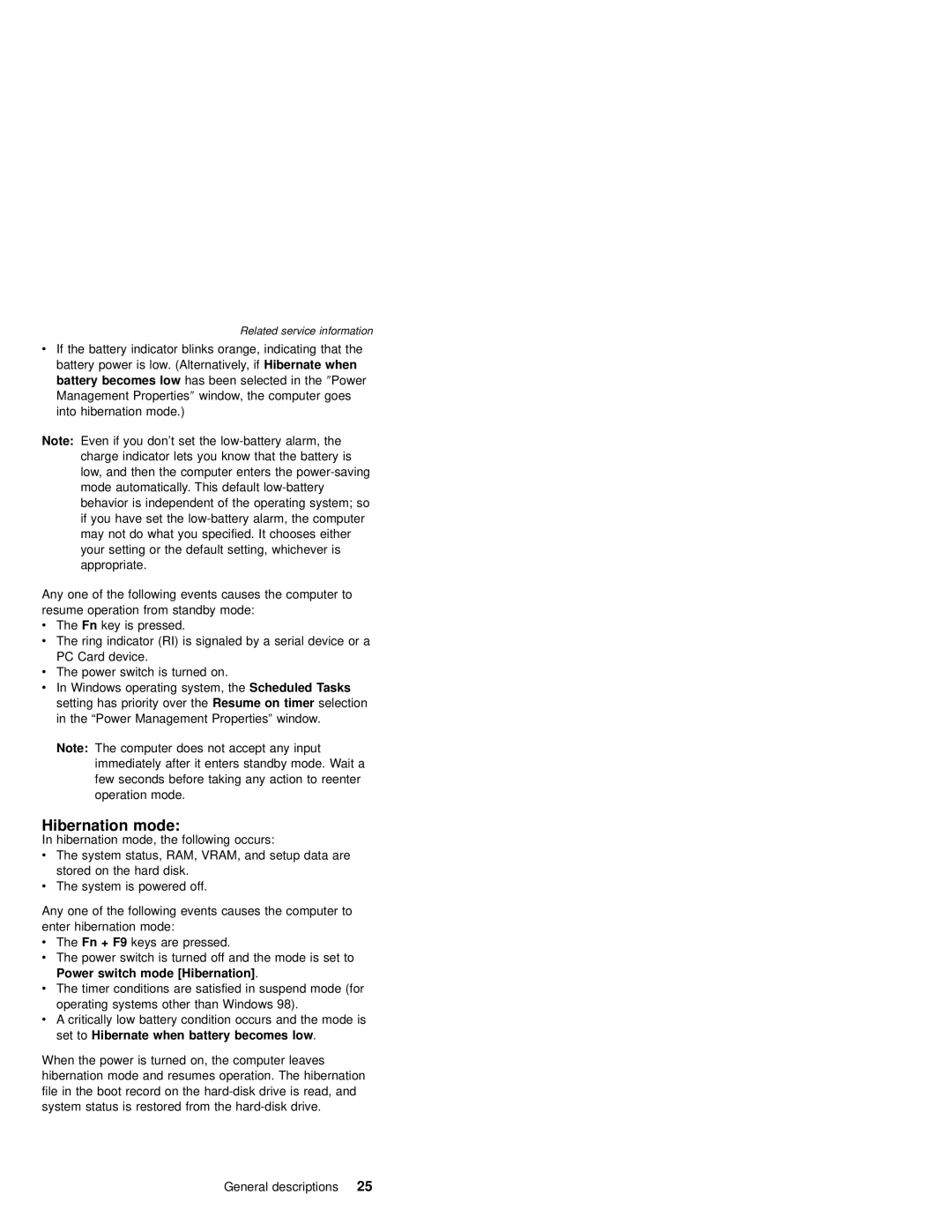Related service information
vIf the battery indicator blinks orange, indicating that the battery power is low. (Alternatively, if Hibernate when battery becomes low has been selected in the ″Power Management Properties″ window, the computer goes into hibernation mode.)
Note: Even if you don’t set the
Any one of the following events causes the computer to resume operation from standby mode:
vThe Fn key is pressed.
vThe ring indicator (RI) is signaled by a serial device or a PC Card device.
vThe power switch is turned on.
vIn Windows operating system, the Scheduled Tasks setting has priority over the Resume on timer selection in the “Power Management Properties” window.
Note: The computer does not accept any input immediately after it enters standby mode. Wait a few seconds before taking any action to reenter operation mode.
Hibernation mode:
In hibernation mode, the following occurs:
vThe system status, RAM, VRAM, and setup data are stored on the hard disk.
vThe system is powered off.
Any one of the following events causes the computer to enter hibernation mode:
vThe Fn + F9 keys are pressed.
vThe power switch is turned off and the mode is set to Power switch mode [Hibernation].
vThe timer conditions are satisfied in suspend mode (for operating systems other than Windows 98).
vA critically low battery condition occurs and the mode is set to Hibernate when battery becomes low.
When the power is turned on, the computer leaves hibernation mode and resumes operation. The hibernation file in the boot record on the
General descriptions 25
